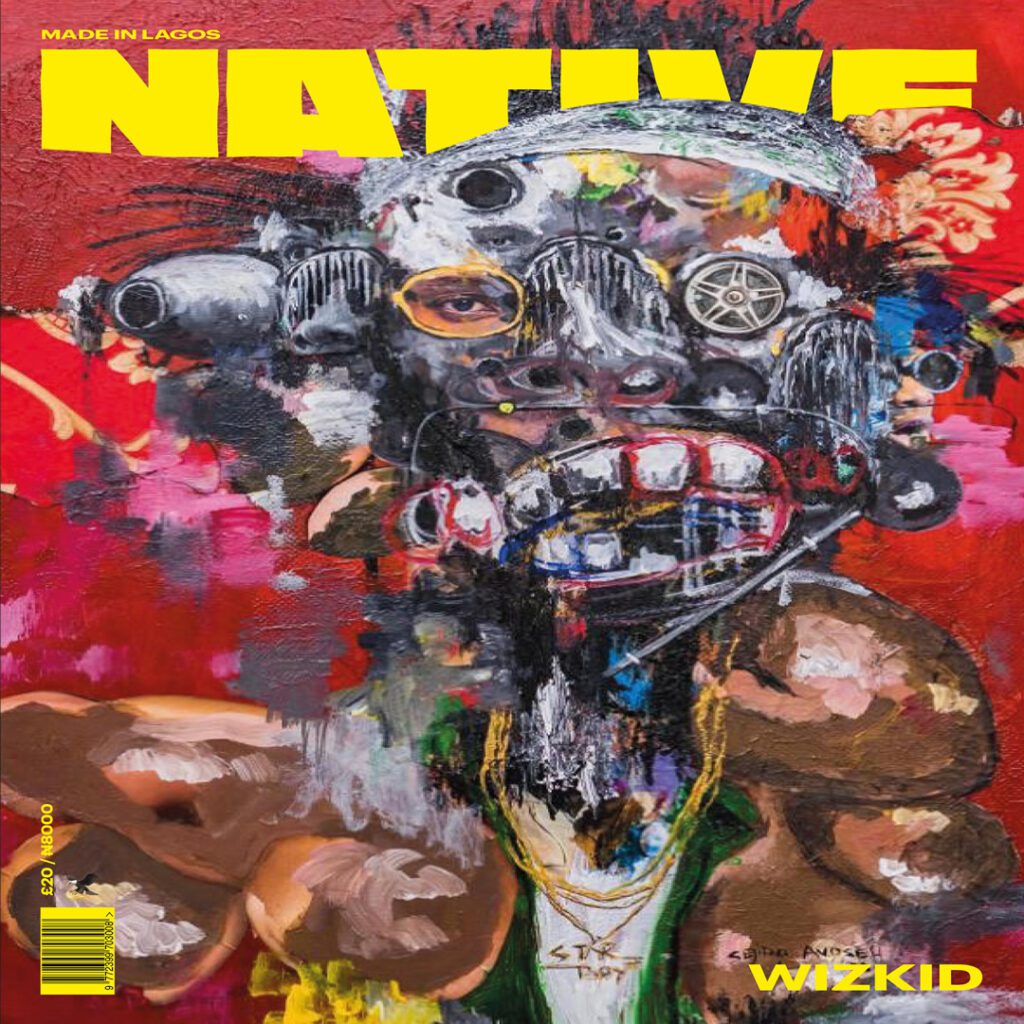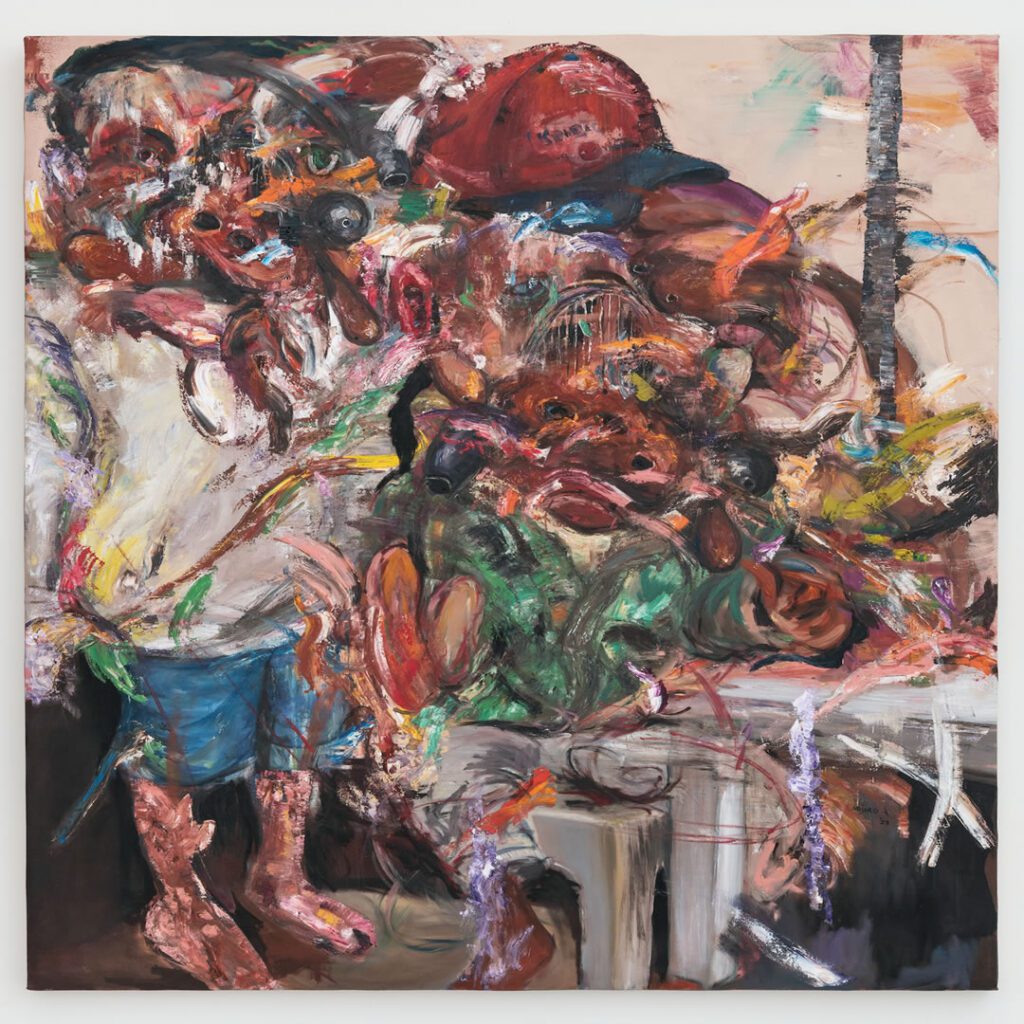LIVING AND LEAVING BEHIND: SEJIRO AVOSEH
Sejiro Avoseh’s art is different at first glance; mixing introspection with commentary. He is as abrasive as he is sensitive. Favoring splotches of primary colors, Sejiro forces your eyes to dart around the canvas. The paintings are crossbred between abstraction, figurative and collages. He mixes human and automobile parts to pass cohesive messages. “I believe as a human being, I am always in motion.” Avoseh shares. These pieces bustle with events, and they unfurl meanings on repeated views.
For Sejiro, art is a barrage of thoughts. The ideas are frenetic, bleeding into one another. It is loose in carriage, and limitless in interpretation. He does this in his own works and exhibitions. He also did it when The Native, a publication that centers on African music commissioned him to make a portrait of Wizkid, a Nigerian superstar. Instead of approaching this work conventionally, Sejiro conjured all Wizkid’s portraits into one painting, managing to capture both essence and evolution of his artistry.
The paintings leave clues of a man whose imagination runs wild, Sejiro’s style is almost outlandish, but the man himself is guarded. He turns off comments on his instagram and leaves praises at arm’s length. He refuses to appear in video interviews choosing to opt for text, and even at that, his responses are short– laconic. He embraces the storm, he contains it. And processes everything within himself.
Raised in Badagry suburbs, Avoseh is the seventh child of ten children. He had to discover his leaning to the arts on a personal basis since none of his family members were particularly inclined. He was immersed in drawing, and crafting in secondary school and eventually chose to expand expertise at Lagos State Polytechnic in 2013. By 2017, he had been selected as one Rele Arts Foundation Young Contemporaries, and performed live art at the maiden Art X event. He had started to appear on 30 under 30 lists and his works had begun to circulate among art collectors worldwide. Almost, if not definitively prodigious in achievements.
Over the years, he found and formed a distinct style, drawing inspiration from within and admiring works from Fracis Bacon, George Condo, Goya, Basquiat, and Picasso. “My style is expressive figuration, and it was discovered through a personal quest to be different. The occurring themes and visual language in my work portrays the concept of ephemeral transitions. My work is a figurative abstracted representation of my time shared in space and spaces.”
In May, a collection of Sejiro’s works was exhibited at Kravets Wehby Gallery in New York titled “Aliens in Spaces.” This provides commentary on the aftermath of the Nigerian mass exodus to foreign countries because home is stifled of dignity. When asked why Sejiro left Nigeria in 2021, he said “I left because home was feeling like the mouth of a shark.”
Beyond country lines however, there lies other challenges Nigerians face after migration; a pressing need to adapt to different cultures, sometimes newer ways to communicate. For an African– to step out of the country is to realize one’s skin color is black. It is to wander through harsh weather in search of acceptance. We are aliens traveling through spaces, this is not our land.
Sejiro anticipates, and reacts to these hardships in his works, he interprets personal moments as grotesque paintings. “Seviyon in Green Gown” portrays himself, daughter and son. “Spiderman Cap” is a portrait of his son enjoying the trivialities that come with childhood. When asked why he chooses to represent himself, and family in images this deformed, he shares “it is a style that will last and I do it to protect myself. I have embraced my identity. So nothing gets to me at this point.”
His last exhibition before Aliens in Spaces, titled “Abuse of Innocence” was held at Angels & Muse in Lagos. It is strong commentary on politics, citizenship and senseless violence, almost macabre in presentation. It is frenzied. Colorful but dark in its themes. One can hardly make out specific subjects in these works, but the message of oppression screams through palettes and brush strokes.
Sejiro has since moved on from political commentary to introspective, autobiographical works. Cramming meanings that are urgent to him yet relevant to us through shared experiences. The works live through him beyond. During his stay in New York, Sejiro shared an image of a collection, a painting of his alongside one of Basquiat’s works. They sit together as timeless, chaotic pieces that have made it out of imagination to bring therapy to their creators and the world. Sejiro Avoseh remains driven by purpose, aspiring to live and leave something behind.
Check out Sejiro Avoseh Exhibition https://www.kravetswehbygallery.com/exhibitions/previous/sejiro-avoseh

Series – Commissioned
Medium- Oil On Canvas.
Size – 99 by 149 cm
Year- 2021.

Series – Alien in Spaces
Medium- Oil On Canvas.
Size – 129 by 152 cm
Year- 2023.

Series – Alien in Spaces
Medium- Oil On Canvas.
Size – 129 by 152 cm
Year- 2023.

Series – Rage and Hues
Medium- Oil On Canvas.
Size – 99 by 149 cm
Year- 2022.

Series – Rage and Hues
Medium- Oil On Canvas.
Size – 129 by 152 cm
Year- 2022.
Oyedele Alokan is passionate about culture and arts. Engage on instagram and twitter, @omoalokan


